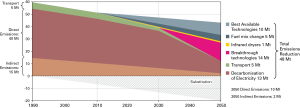by Bernard de Galembert. Cepi Forest and Research Director
As a response to a commitment of the European Union to decarbonise its economy by 80%, the European paper industry made public two years ago its intention to bring the carbon dioxide emissions of the sector down by the same percentage. Breakthrough innovation is vitally needed to fulfil these ambitions.
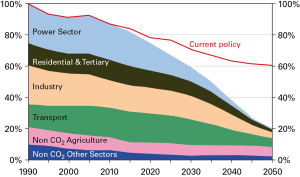
When the European Commission unveiled its intention to reduce the emissions of carbon dioxide by 80% by 2050 in Europe, the pulp and paper industry could have been passively waiting until policy measures aiming at achieving that ambition would have been imposed top-down. But two years ago, Cepi announced the intention of the industry to pro-actively contribute to that effort and at the same time increase significantly the creation of value.
A challenging context
In its Roadmap 2050 Cepi pictured a challenging context in which the industry would have to deliver on its commitments. Indeed, predictions show that the economic growth potential of Europe will be very modest over the coming three to four decades. At the same time the demographic trends in Europe are reflecting a stagnating and ageing population. The EU is a saturated market for traditional paper and board products, while the demand is expected to increase in other parts of the world.
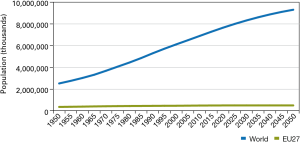
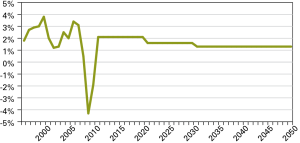
Multiple options to deliver
In that context, the 80% decarbonisation of the industry will be the result of a mix of complementary measures, combining investments in state-of-the-art technology, changes in the fuel mix, purchasing of decarbonised electricity and biofuels-based transport. Still this «bouquet» of measures might not be sufficient and breakthrough technologies are needed. As well as adequate sources of fundings!
The cuckoo strategy
Cuckoos are known for not building their own nests but for using the ones of other birds. Similarly, since there doesn’t exist any unique source of funds to support the decarbonisation and innovation ambitions of the industry, the sector must explore a series of opportunities that are available from the EU research and innovation policy.
At a time when the new budget perspective for the next seven years is under development for the European Union, it is up to Cepi and its partners (like the Forest-based Sector Technology Platform, FTP) to make its best to secure fundings to effectively roll-out its roadmap.
Opportunities do exist in the forthcoming European Innovation Partnerships on water and on raw materials. The soon-to-come Public Private Partnership for bio-based industries (Bridge 2020) offers other occasions to attract some support for research, development and innovation in the industry.
But still, identifying what is necessary to cover the last miles on the road to the target of 80% decarbonisation, namely disruptive innovations, requires the latter to be better defined before exploring the ways and means to fund them. An open innovation process offers the possibility to achieve this in a quick and novel manner.
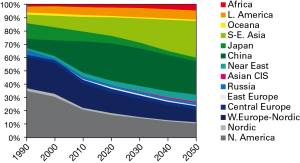
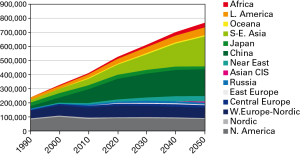
Open-innovation: two competing teams…
Putting two teams to compete in the identification of breakthrough technologies has been the innovative approach chosen by Cepi. These two teams – a red team and a blue team – are composed of some 15 people each. Led by a team captain, guided by a mentor – a former CEO – and served by enthusiastic Cepi staff members, the teams include company representatives, experts appointed by the suppliers of the paper industry (chemical industry, machine and equipment suppliers ecc.), university professors, researchers ecc.
This race for disruptive innovation concepts started in November 2012 when the «Go» was given to the teams during the Cepi European Paper Week. The checkered flag will reveal the winning concept in November 2013. Over one year, the competition is meant to be fun, creative, thinking «out of the box».
When the winning concept will be announced in November 2013, more than a concept winning the competition, more than a team winning the competition, the real winner will be the industry.
… operating in a safe and enabling framework…
To ensure a real commitment and openness from all the participants, Cepi has secured strict confidentiality rules and conditions to properly protect the intellectual property rights, to be signed not only by the team members, but also by their colleagues and all other people and entities who may be, in one way or another, involved in the project.
… thinking out of the box!
In a series of meetings held in Austria, the Netherlands, Spain, Finland and Germany, the teams had opportunities to exchange views with representatives of the viscose, the steel, the energy and the chemical sectors. During these meetings, the teams were able first to identify areas where breakthrough technologies could significantly contribute to the emissions reduction. They then assessed the most promising ones in which more precise innovation concepts may be developed and finally selected and elaborated on the four most relevant of such concepts. Inspiration comes from bio-mimetics or from technologies used in other manufacturing sector, e.g. textile, food ecc., but also from daily life experiences in drying, distributing and separating materials.
And the winner is?
In October, a jury composed of paper companies CEOs and high-level officials from the European Commission – the Commissioner in charge of climate policy will be represented – will have the responsibility to select a winning breakthrough technology concept out of eight candidates submitted by the two teams. The winning concept should meet in many respects the ambitions that have been set in the Cepi Roadmap 2050. First and above all, it must significantly contribute to reducing the emissions of carbon by the industry. Members of the jury will also look at the contributions of the concepts to the generation of added value, as well as at the feasibility and innovativeness of the submitted ideas. Finally, the teams should have identified the critical elements that would enable the development and implementation of the proposed technologies.
On 27 November 2013, a concept will be announced during the Cepi Paper Week as the winner. But the real winner will be the European pulp and paper industry!
Then, time will come for Cepi to help the industry to team up and further develop the proposed concepts. Cepi will also, in connection with FTP, consider ways to channel EU research and innovation fundings to the consortia that plan making the concepts real.
